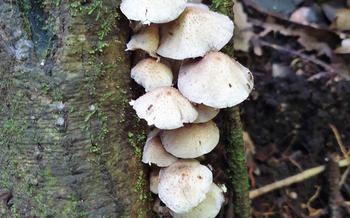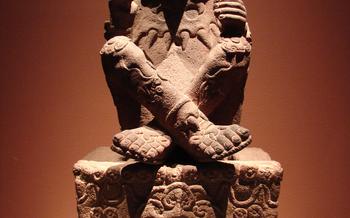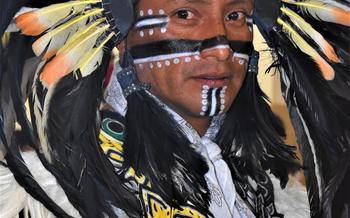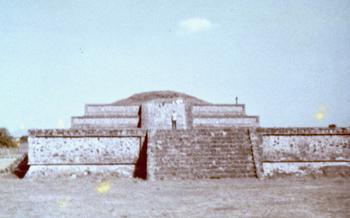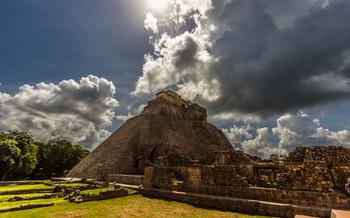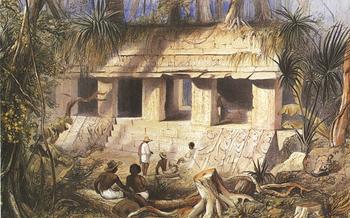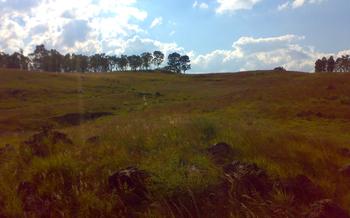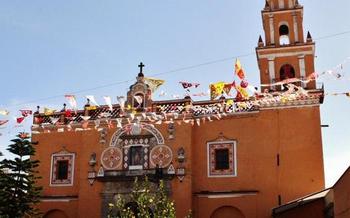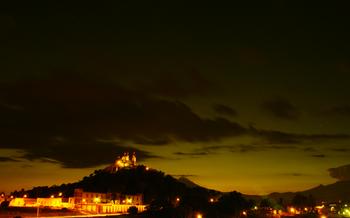
Parque Museo La Venta
- Historical Significance
- Impressive Colossal Heads
- Unique Altars and Stelae
- Exploring the Museum
- Walking Trails and Gardens
- Interactive Exhibits
- Guided Tours
- Photography Opportunities
- Souvenirs and Local Crafts
- Getting There
- Plan for Weather Conditions
Historical Significance
Explore the captivating history of the Olmec civilization, one of the earliest and most influential cultures in Mesoamerica, at the Parque Museo La Venta. Immerse yourself in the grandeur of this ancient society as you marvel at their unique artistic style, characterized by colossal heads, intricate altars, and symbolic stelae. Discover the Olmec's advanced knowledge in astronomy and mathematics, which allowed them to develop a complex calendar and track the movements of celestial bodies. Learn about the reasons behind the decline of the Olmec civilization, which remains shrouded in mystery, but whose legacy continues to influence subsequent cultures in the region.
Impressive Colossal Heads
At Parque Museo La Venta, the colossal heads are undoubtedly the stars of the show. These massive stone sculptures, carved from single blocks of basalt, are a testament to the Olmec civilization's artistic prowess and engineering skills. Weighing up to 20 tons and standing over 3 meters tall, these enigmatic heads have captured the imagination of archaeologists and visitors alike.
The process of carving these colossal heads was a monumental undertaking, requiring immense skill and precision. The Olmecs first selected large boulders from nearby quarries and then transported them to the site, often over long distances. Using stone tools and abrasives, they meticulously carved the heads, creating distinct facial features, headdresses, and intricate patterns.
The purpose and symbolism of the colossal heads remain a subject of debate among scholars. Some believe they represent rulers or deities, while others suggest they were used as boundary markers or to commemorate important events. Regardless of their exact meaning, these colossal heads stand as powerful symbols of the Olmec civilization's cultural and artistic achievements.
Unique Altars and Stelae
La Venta is home to a remarkable collection of altars and stelae, which offer valuable insights into Olmec culture and beliefs. These intricately carved stone monuments depict various scenes, symbols, and glyphs that provide clues about Olmec rituals, historical events, and religious practices.
One of the most notable altars is Altar 4, which features a complex relief carving depicting a ruler or deity seated on a throne, surrounded by attendants and symbols of power. The altar is believed to have been used for religious ceremonies and offerings, and its elaborate design showcases the artistic prowess of the Olmec artisans.
The stelae at La Venta are equally impressive, with their tall, slender forms and intricate carvings. Stela 3, for example, depicts a ruler wearing an elaborate headdress and holding a ceremonial staff, while Stela 2 portrays a kneeling figure with a jaguar mask, possibly representing a shaman or a deity.
By studying these altars and stelae, archaeologists and historians have been able to piece together fragments of Olmec history and culture. The symbols and glyphs carved on these monuments have helped scholars decipher the Olmec writing system and gain insights into their religious beliefs, social organization, and political structure.
Exploring the Museum
Museo de Sitio de La Venta, the on-site museum at Parque Museo La Venta, is a treasure trove of Olmec artifacts and knowledge. Delving into the museum's exhibits, you'll gain a deeper understanding of this ancient civilization's history, culture, and daily life.
Discover an array of fascinating artifacts, including intricately carved ceramics, stone tools, and jewelry. These objects provide insights into the Olmec's craftsmanship, economy, and social organization. Learn about their advanced knowledge of astronomy and mathematics through interactive displays that bring their calendar and writing system to life.
The museum also houses a collection of colossal heads, smaller versions of the iconic stone sculptures found throughout the park. These heads offer a closer look at the Olmec's artistic style and the techniques they used to carve and transport these massive works of art.
Take your time exploring the museum's exhibits, and don't hesitate to ask questions to the knowledgeable staff. Their insights will help you appreciate the significance of the Olmec civilization and its enduring legacy.
Walking Trails and Gardens
Amidst the captivating historical and cultural attractions, Parque Museo La Venta offers a serene escape through its beautiful gardens and walking trails. Stroll along the well-maintained paths, immersing yourself in the tranquility of nature. The lush vegetation, adorned with native trees and exotic plants, creates a picturesque backdrop for exploration. Breathe in the fresh air and let the tranquil surroundings soothe your senses as you wander through this natural haven. Whether seeking a moment of reflection or simply enjoying the beauty of the park, these gardens and trails are an invitation to connect with nature and find inner peace.
Interactive Exhibits
Engage with cutting-edge interactive exhibits and displays that bring the Olmec civilization to life at the Parque Museo La Venta. Learn about the Olmec calendar, their intricate writing system, and their remarkable understanding of astronomy through immersive presentations. Experience hands-on activities that allow you to immerse yourself in Olmec culture and customs, such as trying your hand at creating your own Olmec-inspired artwork or deciphering ancient symbols. These interactive elements offer a unique and engaging way to connect with the past and gain a deeper appreciation for the ingenuity and creativity of the Olmec people.
Guided Tours
Join knowledgeable guides on a journey through time as they unravel the mysteries of the Olmec civilization and the significance of La Venta. These experts will provide in-depth insights into the colossal heads, the unique altars and stelae, and the daily life of the Olmec people. Listen to captivating stories, legends, and historical facts that bring the ancient world to life. Book your tour in advance to secure your spot and avoid crowds, especially during peak tourist seasons. Immerse yourself in the rich history and culture of the Olmecs as you explore La Venta under the guidance of local experts.
Photography Opportunities
Parque Museo La Venta offers a fantastic opportunity for photography enthusiasts to capture stunning images of the colossal heads, the altars, and the lush surroundings of the park. The natural light and the variety of angles provide ample opportunities to create memorable photographs. Take advantage of the golden hours, around sunrise and sunset, to capture the warm and diffused light that enhances the beauty of the park. Experiment with different compositions and perspectives to create unique and striking images. Share your photos on social media using relevant hashtags to connect with other travelers and history enthusiasts, and inspire them to explore the wonders of the Olmec civilization.
Souvenirs and Local Crafts
As you exit the fascinating world of the Olmec civilization at La Venta, take a moment to visit the gift shop and immerse yourself in a vibrant array of souvenirs and locally crafted treasures. Here, you can find unique mementos to remind you of your journey through time.
Discover an array of books that delve into the mysteries of the Olmec civilization, shedding light on their intricate culture, beliefs, and contributions to Mesoamerican history. Support local artisans by purchasing their exquisite handmade crafts, which often incorporate traditional designs and techniques passed down through generations.
From intricate pottery and woven textiles to hand-carved wooden sculptures and colorful paintings, each piece tells a story of the Olmec legacy. Take home a piece of this rich heritage to adorn your home or gift to loved ones, ensuring that the spirit of the Olmec people continues to live on.
Getting There
La Venta is conveniently located just 10 kilometers from the city of Villahermosa, the capital of the Mexican state of Tabasco. To reach the park, you have several transportation options.
For a flexible and independent experience, renting a car is a great choice. This allows you to set your own pace and explore the surrounding area at your leisure. Several car rental companies operate in Villahermosa, offering a variety of vehicles to suit your needs and budget.
If you prefer a more budget-friendly option, taking a local bus from Villahermosa to La Venta is a viable alternative. Buses depart regularly from the city's main bus station and drop you off right at the park's entrance. This option is reliable and affordable, but it may take a bit longer than driving yourself.
Taxis are also readily available in Villahermosa and can be hired for a day trip to La Venta. This is a convenient option if you don't want to rent a car or deal with public transportation. Agree on a price with the driver before your journey to avoid any surprises.
Plan for Weather Conditions
When planning your visit to La Venta, it is important to consider the weather conditions to ensure a comfortable and enjoyable experience. The park is located in a tropical climate, characterized by hot and humid weather throughout the year. Temperatures can soar during the summer months, making it essential to dress appropriately. Opt for lightweight, breathable clothing and wear sunscreen to protect your skin from the intense sun. Carrying a bottle of water is crucial to stay hydrated, especially during extended periods of exploration. To avoid the discomfort of heavy rainfall, it is advisable to visit during the dry season, which typically runs from November to April.
